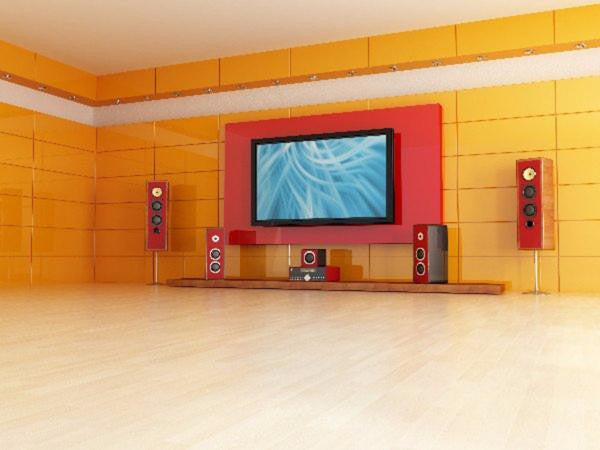When you’re an audiophile, buying a home cinema is a daunting task. A lot of your hopes and dreams are at stake – you’re not going to have the money to do this again for a while, there is a plethora of choices with only a handful of them being relevant to your taste, and advice is pouring down from every corner of the cyberspace. Here, we’ll tell you ten things audiophiles forget to do and how it affects their purchases. Following are ten most-overlooked aspects of buying home theatres.
1. Requirement Over Availability
We know how tempting it is to purchase that 7.1 speaker system coupled with a 40’ UHD screen even as you are aware that given the amount of space you have in your living room, getting 5.1 isn’t enough, it might even be superfluous. How rookie an audiophile is, shows from the extent to which their home cinema systems are over-equipped. If you want the optimal listening and viewing experience, pay close attention to the amount of space you have available – go so far as to determine where the screen and the centre-piece along with each woofer, sub-woofer and Tweeter will be kept before you walk into a showroom. Moreover, a very overlooked device is the soundbar. A simple addition as a soundbar can bring about a mind-blowing change in the quality of music.
2. Quality over Quantity
This applies when a high quality home cinema system of mediocre specifications is traded for a less known, less acclaimed, and less eminent system that claims to offer you the crème de la crème of human creation, somehow convincing yourself that this shady device isn’t going to let you down. More gear doesn’t translate to better sound.
3. Going for a One-Size-Fit-All
Realise that different kinds of music require different gear, and different classes of equipment fit for each of them. It is for a reason that there is a plethora of speaker types available in the market - from bookshelf speakers to floor mounts, each has its use. Classical music, for example, focuses on mids more than highs and lows – you need a home cinema system with emphasis on the center piece and tweeters. On the other hand, hard rock and metal relies primarily on their bass notes, so low- frequency devices such as woofers need to be given extra attention. For those who have refined taste, it’s not the best idea to opt for a model that claims to suit every genre of music equally because it’s technically impossible for such a system to exist.
4. Specs Vs Intuition
This is probably the most important point we’re going to make. When buying a home cinema system, do not trust your senses or your intuition. You aren’t superman, what you see or hear can be doctored by the interior designers of leading showrooms. Rely exclusively on what the numbers tell you, and you’ll get superb sound once your home cinema system is installed properly at home. Ask the seller to provide you a demo of the home theatre in your room itself, so that you can get a clear idea of the capabilities of the gadget before you buy it.
5. Falling for that ‘Incredible’ Offer
Nobody will ever give you more stuff than you paid for. If someone tells you that a system with incredible specs is selling dirt cheap on the internet, they’re lying. If you take a look, pay close attention to point 6 through 10, and in all likelihood, you’ll see why it’s selling cheap.
6. Specs Again – Overlooking Dated Technology
It’s electronics, not real estate. What is novel today will be ancient history in a year. It is not uncommon for novice audiophiles to fall for the trap of old tech being sold cheap, only to realise months later that their big purchase is old, so old that it’ll be at most a year before they have to shell out cash to upgrade it. Google to find the release date, and tally up the specs with those offered today. Go for latest technologies, such as DTS, MasterHD, Blu Ray, and so on.
7. Not Planning for End-Of-Life
Home cinema systems are big capital expenditures. Most buyers simply purchase the one with the best reviews or the one that offer the most alluring features, forgetting entirely the duration for which they expect to be able to use the device. To avoid buying nodes that require to be replaced sooner than you’d like (owing to obsoleting, puny build, easy fatigue, etc.) plan for the end of the system’s life i.e. buy gear of specifications that are likely to persist in the world of audio engineering up until the time you decide to upgrade/replace to a new one.
8. Overlooking Equipment Versatility
Does the home theater work across all platforms, play all file types, come with multi-jack and multi-pin connection options, and work with various types of peripherals? It’s a big disappointment to find out, say, that your new home theater only accepts cables bought from its own manufacturer and you’re stuck with buying upgrades from the same brand for life. Latest developments in cable technology have made it possible for you to fit the same cable into various home cinemas, and it might be a good idea to consider them as an option.
9. Overlooking Upgrade Potential
The upgrade potential of a home theater system is how far you can extend it in terms of functionality and hardware. For example, a home theater with a 2.1 speaker system that has the provision for a 5.1 system for future up-gradation is a better purchase than one that fixed you to a single configuration. Keep the future open as far as you can while making your purchase.
10. Ignoring Warranty T&C’s
The biggest area where buyers of home cinema systems in India seem to get ripped off is the warranty section. Most equipment that are imported specially from overseas suppliers come with limited warranties that rarely come in handy. When a device malfunctions however trivially post the warranty period, the amount of money required to patch up your system is massive. Consider opting for suppliers who offer extended warranty.






Comments
0 comments